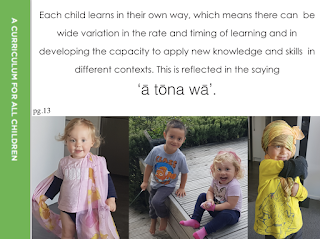What does it mean to see me?
30 January 2020, Lynn Rupe
“Do you know me? Do you let me fly? Do you hear me?
Is this place fair for us? Can I trust you?
May, Carr, Podmore (2001)
For years the words of May, Carr & Podmore have influenced my view on teaching, learning and leadership. I have always thought that everyone involved in the professional life of the centre should be able to answer yes to each of these questions. More recently I have focused on, “Do you know me’ by asking ‘what does it mean to see me?’ How would you the reader answer that question, what does it mean for your colleagues to truly see you, what does it mean for you to truly see the child? What sort of environments, values, teaching practices do we need in order to allow ourselves to be seen? For me I think one of the restrictions of being seen are the labels we use to categorise people. For example the age label which is what I want to ponder on with you.
Peter Gray also talks about free age mixing in his video Self Directed Learning Fundamentals, saying, “children don’t have anything to learn from children of the same age as themselves”
For years now we have established centres that divide children in to any thing from 2 to 6 age group rooms. This practice means that potentially children can have up to 5 transitions before they head off to school. I remember listening to Nathan Wallis several years ago and he said in terms of brain research it would be valuable for children to have the same teacher right through primary school, imagine then the importance of these secure based attachment relationship for children up to 5. Lorraine Sands wrote in her article Connection: The beating heart that drives learning, “Gone are the days when we thought a little distance was necessary between a teacher and a child, a little objective professionalism. Neuroscience research gives us all the rationale we need to justify emotional connection (Gerhardt, 2011; Gopnik, 2010; Grille , 2015). What we have to do, as teachers working inside the myriad of settings here in Aotearoa New Zealand, is stand up and advocate for the conditions that will nurture connection and stay in children’s lives.” This is something that many centres thoughtfully consider, finding ways to ensure children continue to have a touch stone teacher. It is not just about the teacher relationship though, it is also whanaungatanga and ako values that underpin wise practice. There are mixed age settings where there are several whānau rooms ensuring children stay connected to the teachers and their friends throughout their learning journey with the centre. No transitions, no age separating just connection.
